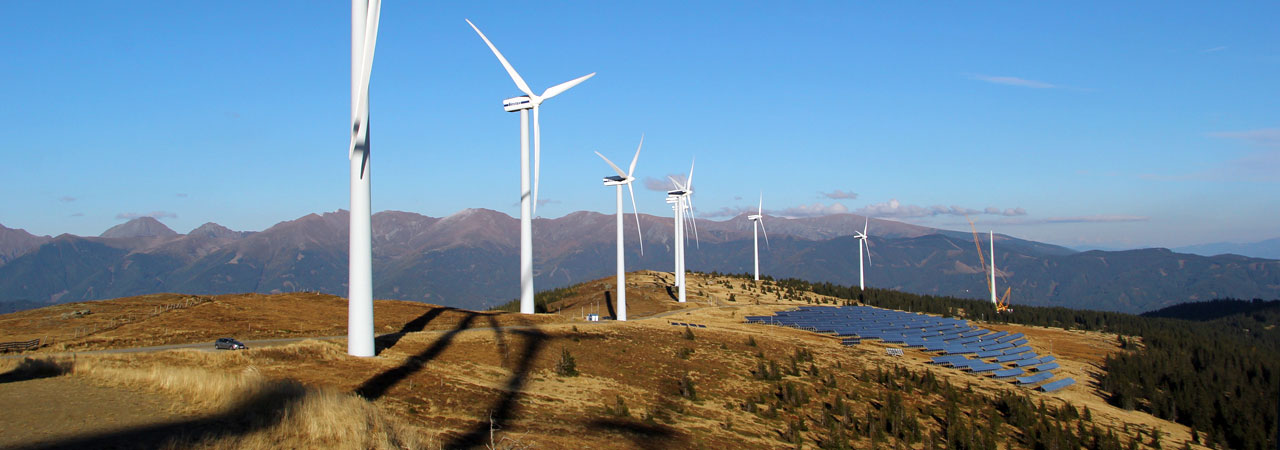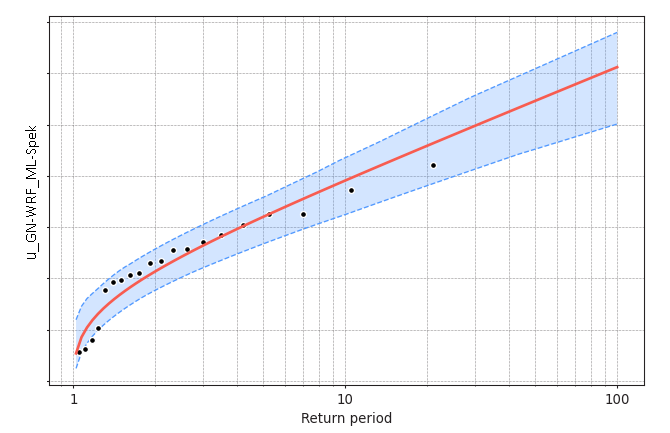
Estimation of the extreme wind speed
The extreme wind speed corresponds to the 10-minute average wind speed with a return period of 50 years (DIBt, 2015 and IEC, 2025).
GEO-NET offers site- and hub-height-specific estimates of the extreme wind for your planned wind energy project.
An extreme wind analysis is carried out as part of a stability analysis. According to (DIBt, 2015), the extreme wind can be determined in two ways: On the one hand, by a simple comparison of the wind zones based on the wind zone map according to DIBt and the published wind zone in the design of the planned WTG type or, on the other hand, according to the calculation method according to DIN 1991-1-4 NA based on the information on the wind zone and terrain category at the planning location. If the wind zone comparison is not successful or not possible and the design value is also exceeded according to the DIN 1991-1-4 NA calculation method, a more precise estimate of the extreme wind is necessary in order to check whether stability can be guaranteed. This is done as part of an extreme wind assessment offered by GEO-NET.
The basis of extreme wind estimation is a method of extreme value statistics, whereby a stochastic behaviour of the event to be investigated is assumed. Annual wind speed maxima are extracted from the underlying time series. It is assumed that the extracted maxima can be described using the Gumbel distribution, which is widely used in industry. The extreme wind is estimated using the Gumbel distribution adapted to the extracted maxima. As part of the in-house validation of the estimation of the extreme wind, which included more than 50 measurements throughout Germany, a scaling factor was determined by which the calculated extreme wind is to be multiplied. A safety margin of half a standard deviation was taken into account here in order to take the uncertainties of the model chain into account accordingly.
A spatially representative 20-year wind time series based on a WRF simulation and processed using a tried-and-tested procedure based on machine learning and a spectral method serves as the data basis (Mesoscale 10-min time series with ML-based optimization. - GEO-NET Umweltconsulting).

Fig. 1: A Gumbel distribution is fitted to the annual maximum values of the wind speed u_GN-WRF_ML-Spek.
Sources:
- DIBt, 2015: Richtlinie für Windenergieanlagen. Einwirkungen und Standsicherheitsnachweise für Turm und Gründung, Mitteilung des DIBt, Deutsches Institut für Bautechnik, Berlin.
- DIN, 1991: Eurocode 1: Einwirkungen auf Tragwerke - Teil 1-4: Allgemeine Einwirkungen – Windlasten; DIN EN 1991-1-4 und DIN EN 1991-1-4/NA (Nationaler Anhang); Deutsches Institut für Normung e.V.; Berlin.
- IEC, 2025: IEC 61400-15-1:2025 Edition 1.0: Wind energy generation systems - Part 15-1: Site suitability input conditions for wind power plants, International Electrotechnical Commission, Geneva, Switzerland.
Do you have any questions?
Feel free to contact us or give us a call right away!
Tel: +49 (0)511 3887200
We are happy to help you!
